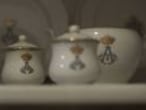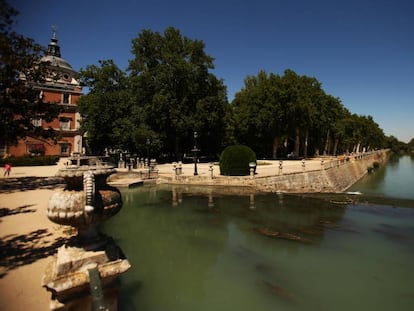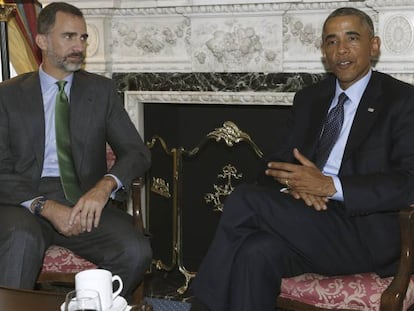Meals fit for a king: Madrid¡¯s Royal Palace kitchens unveil their mysteries to visitors
Used to feed monarchs on a day-to-day basis for three centuries, these huge facilities are the oldest in Europe to still be so well preserved

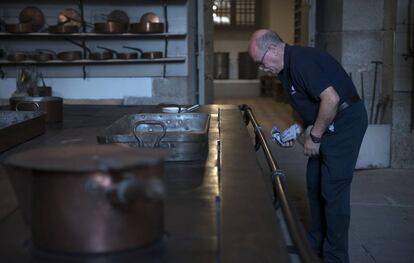
Imagine the milky light of Johannes Vermeer¡¯s paintings filtering through the room while a large piece of fish crackles over the coal fire. Picture the sound of the hustle and bustle of the arriving hunters while a large piece of meat sits on the grill. Armed with these images, one is ready to enter the kitchens of the Royal Palace in Madrid, which have been restored and are now open to the public.
These are the oldest well-preserved kitchens of all the royal palaces in Europe
This is no ordinary visit: these are the oldest well-preserved kitchens of all the royal palaces in Europe. There are older ones, and ones that were bigger and better equipped, but they were all lost through indolence or renovations. The Italian architect Juan Bautista Sachetti designed these kitchens in 1737, and they were capable of turning out elaborate royal menus with as many as 42 entrees. The king could not, of course, eat everything, so the leftover delicacies would trickle down to feed his legion of servants and courtiers.
Enormous copper kettles, stone sinks the size of a bathtub, cold stores from the days of Alfonso XII, a large pot shaped like a turbot, cutting tables and knife holders, vegetable wringers, trays, ceramics and giant mortars... this is just a taste of what visitors will find inside.
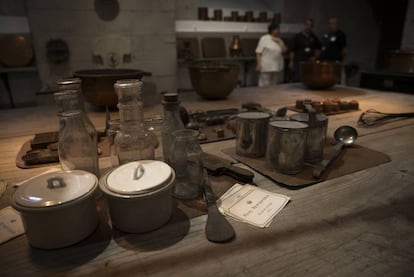
The royal kitchens operated uninterruptedly for three centuries, but the last time that cooking took place there on a daily basis was during the Republic. Since then, these 800 square meters have been used to cater specific events held at the palace, including the 2004 wedding of Spain¡¯s King Felipe VI and Queen Letizia.
The current appearance of these rooms is the work of Queen Isabel II, who last redecorated them, although they also contain some changes made by her son and grandson, the Alfonsos, and some other items from previous centuries, for a total of 2,625 objects.
Food literature
In the middle of the 19th century, France commanded the world of cuisine, both in nomenclature and in usage. Mariano Pardo de Figueroa (1828-1918) ¨C known by his famous pseudonym, Doctor Thebussem ¨C described these royal rooms from the basement to their high windows. ¡°The cooking utensils lay on the counters within reach of the chef, and appear cleaner than the new ones sold in stores,¡± he said, adding that the same went for the kitchen uniforms.
The cooking utensils appear cleaner than the new ones sold in stores Luis de la Pe?a Onetti, former guard for King Alfonso XIII
In the catalogue of the exhibition, written by the curator Jos¨¦ Luis Sancho, there is a description of the kitchens by Luis de la Pe?a Onetti, who was a guard for Alfonso XIII. ¡°It was certainly worth admiring the spectacle of those spacious buildings, full of old and modern china and utensils, where the copper accentuated its bright color. All this was cleaned and well organized by a small army of cooks led by the head chef¡¡±
Alfredo P¨¦rez de Armi?¨¢n, president of the national heritage trust Patrimonio Nacional, Jos¨¦ Luis Garc¨ªa, director of the collection, and Royal Palace curator Pilar Benito discussed details and anecdotes at the presentation of the kitchens last month, including stories about Alfonso XII¡¯s taste for roast beef, and the many diners who made use of what was cooked in the Royal Palace. The whole court took advantage of those kitchens and the food that the king rejected. And although there was a lot of French food served, there was never any shortage of cocido, that most Madrile?o of stews.
English version by Debora Almeida
Tu suscripci¨®n se est¨¢ usando en otro dispositivo
?Quieres a?adir otro usuario a tu suscripci¨®n?
Si contin¨²as leyendo en este dispositivo, no se podr¨¢ leer en el otro.
FlechaTu suscripci¨®n se est¨¢ usando en otro dispositivo y solo puedes acceder a EL PA?S desde un dispositivo a la vez.
Si quieres compartir tu cuenta, cambia tu suscripci¨®n a la modalidad Premium, as¨ª podr¨¢s a?adir otro usuario. Cada uno acceder¨¢ con su propia cuenta de email, lo que os permitir¨¢ personalizar vuestra experiencia en EL PA?S.
?Tienes una suscripci¨®n de empresa? Accede aqu¨ª para contratar m¨¢s cuentas.
En el caso de no saber qui¨¦n est¨¢ usando tu cuenta, te recomendamos cambiar tu contrase?a aqu¨ª.
Si decides continuar compartiendo tu cuenta, este mensaje se mostrar¨¢ en tu dispositivo y en el de la otra persona que est¨¢ usando tu cuenta de forma indefinida, afectando a tu experiencia de lectura. Puedes consultar aqu¨ª los t¨¦rminos y condiciones de la suscripci¨®n digital.
